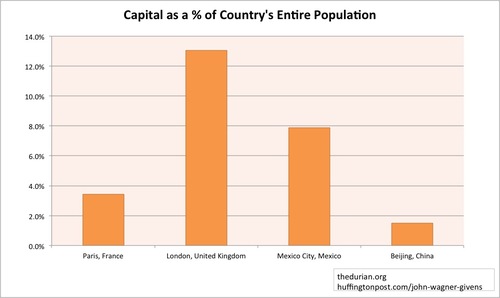While I very much enjoy blogging about China, I often feel that by addressing already popular stories, many of which I do not think were terribly substantial to begin with, I provide only limited value-added. In an effort, therefore, to make more of a substantial and original contribution, I am launching new series that will use statistics as a basis for thinking about China, especially its political and legal systems. I believe this approach will be especially helpful for several reasons:
First, believe it or not, China actually publishes a huge range of statistics, many of which would be difficult or even impossible to find for many Western countries. For example, suing some part of the U.S. government is a common and mundane enterprise, but statistics on numbers of cases and outcomes are notoriously hard to come by. By contrast, while actually suing the state is much more problematic in China, statistics on such cases and their results are relatively easy to come by. Thousands of government organs and departments at a wide variety of levels are compelled to publish yearbooks that often include a quantitative component and some publish massive tomes completely devoted to statistics. This is largely the consequence of a culture and tradition of central planning and "scientific development" rather than liberalism or transparency. Nevertheless, the results are impressive and useful. Little of this data is ever presented to an English language audience because it requires the laborious task of trolling through Chinese yearbooks, a task with which I am very familiar. While official Chinese statistics must be taken with a larger-than-average grain of salt, the very fact that they are paid little attention to by outsiders means they are not nearly as politicized or manipulated as the few headline-grabbing numbers, such as GDP growth.
Second, a country the size of China cries out for quantitative measures in order to get some sense of representativeness and scale. In smaller countries individual incidents, leaders, and places are relatively much more important. What happens in Paris, London, or Mexico City often sets the tone for France, the United Kingdom, Mexico, in no small part because a large portion of their citizens reside in their capitals. By contrast, Beijing represents a tiny fraction of China's total population and its relevance is primarily as the seat of the national government. Generalizing is also difficult because China's diversity is staggering. Depending on how you count, China has eight official languages, indigenous spoken languages from nine language families, and Chinese itself has at least 235 dialects. While it is vital to be mindful of such diversity, statistics are a neat way of summarizing this complex picture or of comparing different groups or regions.
Third, and largely as a result of its size, discourse about China is prone to gigantic ridiculous over-the-top hyperbole. For example, a review of a London kebab shop wonders how long it will be before "China loses patience with the fat and pointless West and just slaughters us all in our beds one bright cold day in April." Pointing out that China's military spending is modest when compared to that of NATO's and that Chinese obesity rates are climbing quickly is a good way to counter the speculation of this out-of-control food critic. Indeed, cold hard data is something of a panacea for out-of-control exaggeration.
It is my hope that this series will be an original contribution that will add a bit of empiricism and sanity to the discourse about China.
Several of my older pieces already fit into the series:
See what The Hurun list of Chinese Billionaires tells us about: * Rabbits * Women * Regions of China* Gangnam Style
For more posts in this series, keep an eye on my blog or check my up to date list here.



